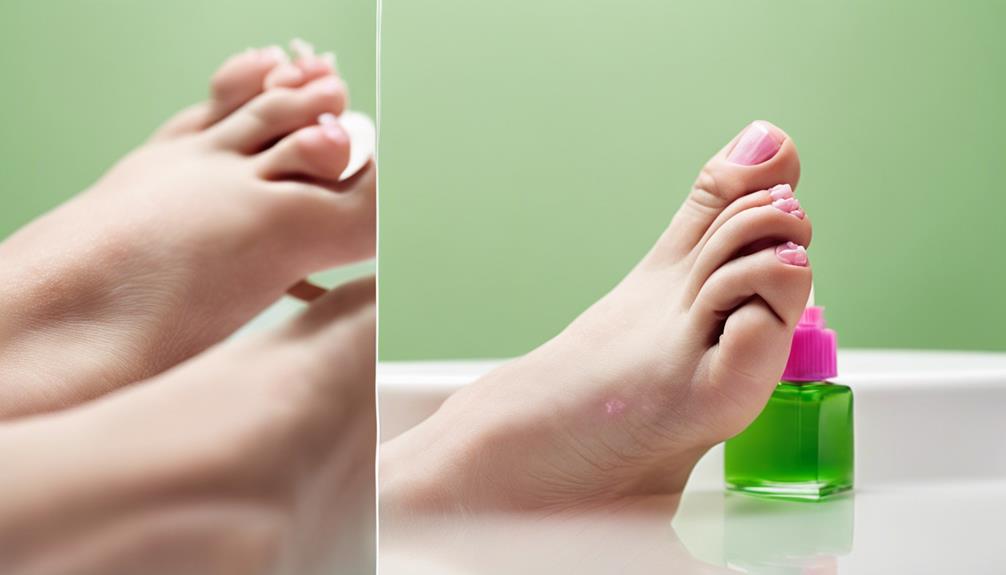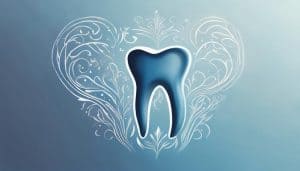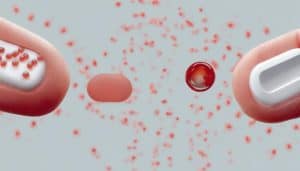To treat green nails at home, start by addressing the underlying infection. Clean and prepare your nails by removing old polish, soaking them in warm water with tea tree oil, and washing your hands thoroughly. Apply antibacterial ointments as directed and maintain good nail hygiene by trimming and disinfecting your nails regularly. Consider using home remedies like soaking infected nails in a diluted bleach or vinegar solution. By following these steps, you'll be on your way to treating your green nails effectively. Now, discover how to further enhance your treatment plan and achieve peak nail health.
Key Takeaways
• Remove old nail polish, soften nails with tea tree oil, and wash hands to clean and prepare the nail area for treatment.
• Apply antibacterial ointments as directed, gently massaging into the nail and surrounding skin to combat infection.
• Soak infected nails in diluted bleach or vinegar solution, then trim back infected nails as they grow out to remove infected areas.
• Maintain cleanliness and dryness of the affected area, washing hands frequently and drying them thoroughly to prevent reinfection.
• Use over-the-counter treatments like antifungal creams, nail whitening pens, and vitamin E oil, following product instructions carefully for effective treatment.
Understanding Green Nails Causes
Since bacterial infections, particularly those caused by Pseudomonas aeruginosa, are the primary culprits behind green nail discoloration, understanding the underlying causes of this unsightly issue is imperative.
As you explore the world of green nails, you'll discover that moisture and improper nail prep create an environment for bacteria to thrive and cause green discoloration. The bacteria produce green pigments that stain the nail, making it difficult to remove the discoloration.
You might be wondering why this happens. Well, when you wear artificial nails or practice poor hygiene, you're creating a breeding ground for bacteria to grow. This leads to a condition known as Green Nail Syndrome, or chloronychia. The bacteria secrete green pigments that penetrate the nail plate, causing the unsightly discoloration.
Understanding the causes of green nails is vital for effective treatment and prevention at home. By recognizing the role of bacteria, particularly Pseudomonas aeruginosa, in causing green nail discoloration, you can take proactive steps to prevent it.
Keep your nails clean and dry, avoid using artificial nails, and maintain good hygiene practices to reduce the risk of bacterial growth. With this knowledge, you'll be better equipped to tackle green nails and regain the confidence that comes with having healthy, beautiful nails.
Identifying Bacterial Infections
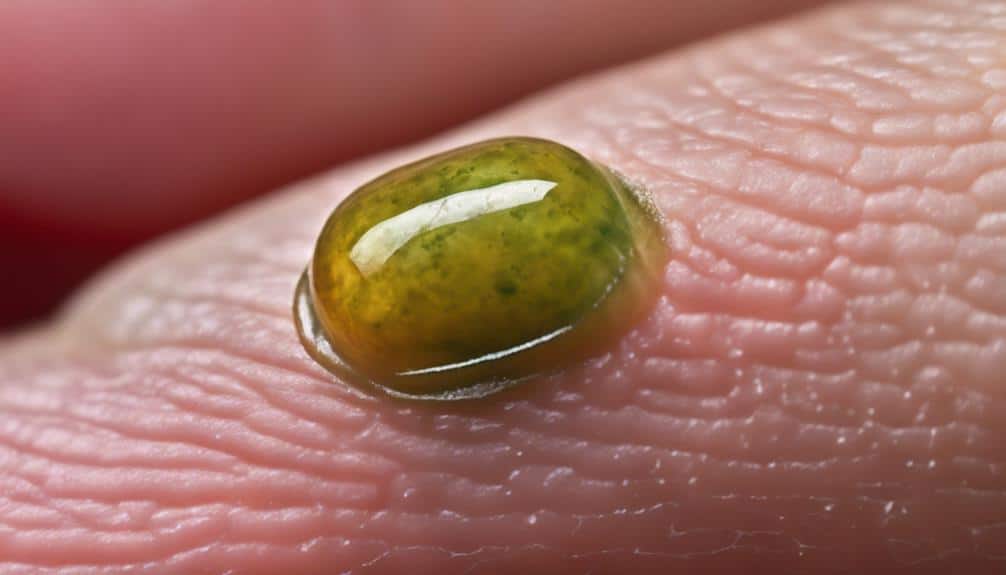
To identify bacterial infections causing green nails, inspect your nails for characteristic signs such as greenish-black discoloration, brittleness, and a foul odor, which can indicate the presence of Pseudomonas aeruginosa. These signs often appear when bacteria thrive in moist environments, creating a breeding ground for infection.
When examining your nails, look for:
- Greenish-black discoloration: A green or black tint on your nails can be a clear indication of bacterial infection.
- Brittleness: If your nails are brittle or fragile, it may be a sign that bacteria are breaking down the nail structure.
- Foul odor: A strong, unpleasant smell from your nails can indicate the presence of bacteria.
If you notice any of these signs, it's important to take action. Bacterial infections can be challenging to treat, but with the right approach, you can restore your nails to their natural state.
Remember, good nail hygiene is vital in preventing bacterial infections. Keep your nails dry, and avoid sharing nail care tools to prevent the spread of bacteria.
With the right treatment, you can overcome green nails caused by bacterial infections.
Cleaning and Preparing Nails
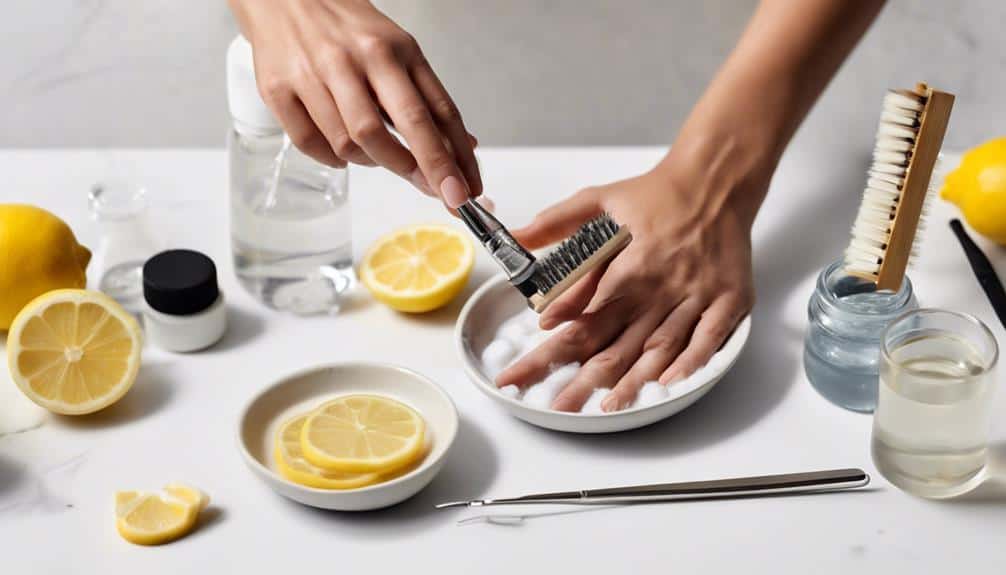
Now that you've identified the infection, it's time to clean and prepare your nails for treatment.
You'll need to remove old nail polish, soak and soften your nails, and wash your hands thoroughly to prevent the infection from spreading.
Remove Old Nail Polish
Gently remove old nail polish using a non-acetone nail polish remover, taking care to eliminate every last remnant to guarantee a clean slate for treatment. This essential step ensures that your nails are properly prepared for the treatment of green nail discoloration.
To effectively remove old nail polish, follow these key steps:
- Select a gentle remover: Choose a non-acetone nail polish remover to avoid drying out your nails and exacerbating the condition of green nails.
- Thoroughly cleanse the nail surface: Ensure that all remnants of old nail polish are completely removed to allow for effective treatment.
- Prepare nails for treatment: Properly cleaned and prepared nails provide a suitable base for subsequent treatment steps to address green nail discoloration.
Soak and Soften Nails
With your nails properly prepared, soak them in warm water infused with a few drops of tea tree oil to soften the nails and surrounding skin, creating an ideal environment for cleaning and preparation. This step helps to loosen any debris and bacteria that may be present, making it easier to clean and treat the affected area.
| Step | Action | Purpose |
|---|---|---|
| 1 | Soak nails in warm water with tea tree oil | Soften nails and surrounding skin |
| 2 | Gently clean nails with a soft brush | Remove debris and bacteria |
| 3 | Use cuticle remover to soften and push back cuticles | Promote healthier nail growth |
| 4 | Dry nails thoroughly | Prevent further moisture buildup |
| 5 | Avoid harsh chemicals or abrasive tools | Prevent nail damage |
After soaking, gently clean your nails with a soft brush to remove any remaining debris or bacteria. Be sure to dry your nails thoroughly to prevent further moisture buildup, which can exacerbate the infection. Remember to avoid harsh chemicals or abrasive tools that can damage your nails while cleaning and preparing them for treatment.
Wash Hands Thoroughly
Before treating your green nails at home, wash your hands thoroughly with soap and water to remove dirt and bacteria, establishing a clean slate for the treatment process. This vital step helps prevent the spread of infection and allows the treatment products to work more effectively.
Cleaning the nails properly is essential in preparing them for the treatment process. Remove any existing nail polish or acrylics to start with a clean nail surface. This ensures that the treatment products can penetrate deeper into the nail, providing better results.
Here are some key points to keep in mind:
- Wash hands thoroughly with soap and water to remove dirt and bacteria.
- Clean the nails by removing any surface contaminants, including old nail polish or acrylics.
- Prepare the nails by ensuring they're free from debris and contaminants, allowing for better absorption of treatment products.
Applying Antibacterial Ointments
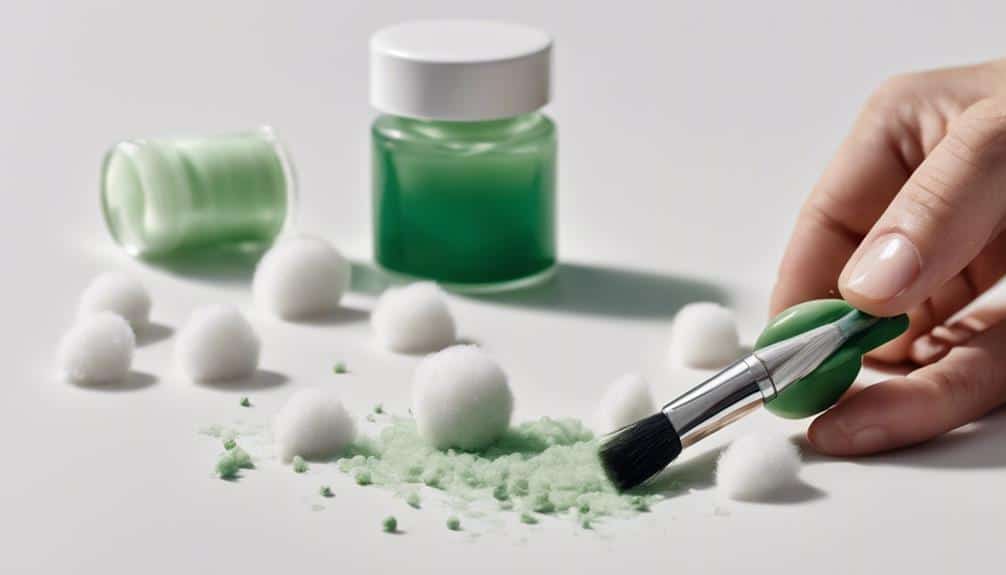
When applying antibacterial ointments to treat your green nails at home, it's crucial to follow proper application techniques to guarantee effective treatment.
You'll want to learn how to apply these ointments correctly to combat bacterial growth and prevent the spread of infection.
Ointment Application Tips
Apply a thin layer of antibacterial ointment directly to the affected green nail, covering the entire nail surface and focusing on the discolored area. This targeted application will help combat the bacterial infection causing the green discoloration. When applying the ointment, gently massage it into the nail and surrounding skin to enhance absorption.
Here are some essential ointment application tips to keep in mind:
- Follow product instructions: Repeat the application of the antibacterial ointment as directed by the product guidelines to guarantee effective treatment.
- Avoid excessive use: Refrain from using too much ointment, as this can lead to skin irritation or adverse reactions.
- Gentle massage: Massage the ointment into the nail and surrounding skin to facilitate better absorption and promote healing.
Preventing Infection Spread
By incorporating antibacterial ointments into your nail care routine, you can effectively prevent the spread of infection and create a conducive environment for your nail to heal. When treating green nails at home, it's essential to combat the Pseudomonas aeruginosa bacteria that cause the discoloration. Antibacterial ointments like bacitracin or polymyxin B can help combat this bacteria, promoting healthy nail growth.
| Antibacterial Ointment | Effectiveness | Instructions |
|---|---|---|
| Bacitracin | Effective against Pseudomonas aeruginosa | Apply 2-3 times a day, covering the entire nail surface |
| Polymyxin B | Combats bacterial growth | Apply 2-3 times a day, gently massaging into the nail bed |
| Combination ointments | Synergistic effect against bacteria | Follow product instructions for application frequency and dosage |
Remember to follow the instructions for ointment application to maximize its effectiveness in treating green nails. Regular application of antibacterial ointments can prevent the spread of infection and promote nail healing. By incorporating these ointments into your nail care routine, you can effectively treat green nails at home and restore your nail's natural appearance.
Using Antifungal Products Effectively
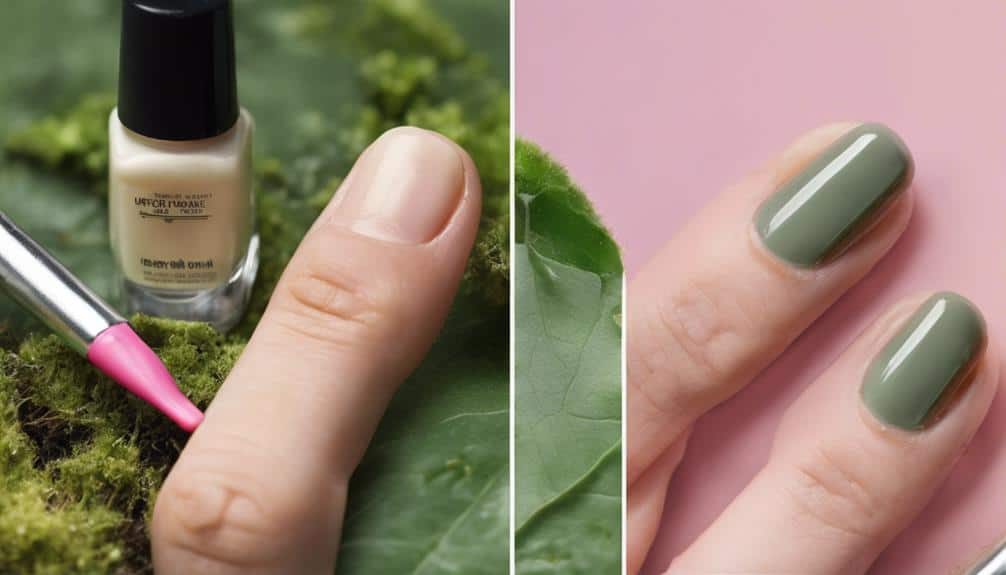
To effectively combat green nails, you should incorporate antifungal products into your treatment routine, as they've proven to be a reliable solution in fighting fungal infections that cause discoloration. By using antifungal products correctly, you can enhance their efficacy in treating green nails at home.
Here are three essential tips to keep in mind when using antifungal products:
- Apply as directed: Follow the instructions provided with the antifungal product to make sure you're applying it correctly to the affected nail bed.
- Consistency is key: Use the antifungal product consistently to combat the fungal infection and promote healthy nail growth.
- Combine with good hygiene: Practice good nail hygiene alongside using antifungal products to maximize their effectiveness in treating green nails.
Maintaining Good Nail Hygiene

You can greatly reduce the risk of developing green nails by adopting a few simple habits that promote good nail hygiene. By incorporating these habits into your daily routine, you'll be well on your way to preventing bacterial or fungal infections that can cause green nails.
To maintain good nail hygiene, it's essential to:
| Good Hygiene Practice | Why It Matters |
|---|---|
| Wash hands frequently and dry them thoroughly | Prevents moisture buildup, reducing the risk of green nails |
| Trim and disinfect nails regularly | Removes bacteria and fungi, reducing the risk of infection |
| Avoid prolonged soaking of nails in water | Prevents weakening of nails, making them more susceptible to infection |
Preventing Future Infections
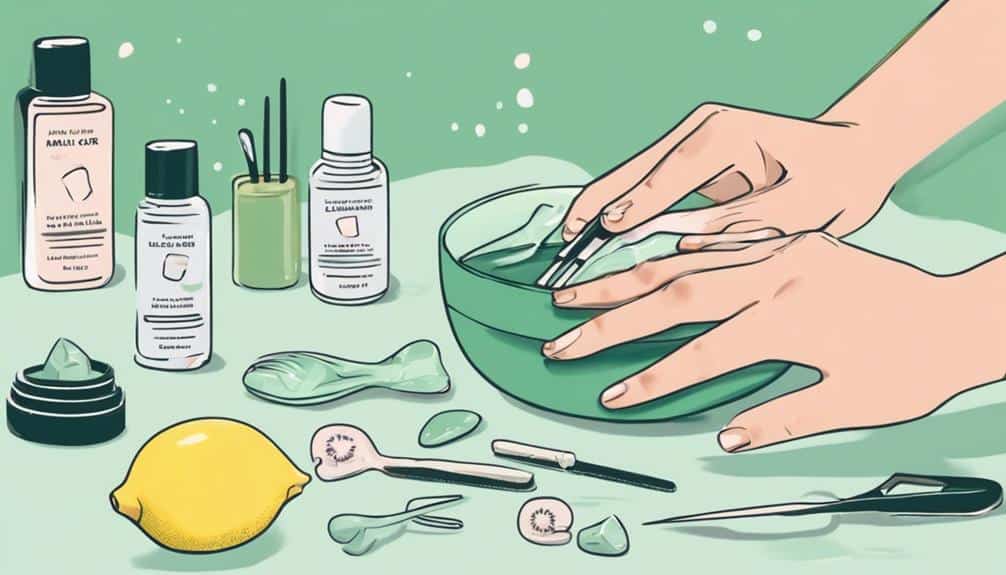
Frequently, the small, consistent efforts that make all the difference in preventing future infections that can lead to green nails. By adopting simple yet effective habits, you can reduce the risk of green nail syndrome.
To prevent future infections, maintaining good nail hygiene practices is vital. Here are three key takeaways to keep in mind:
- Maintain your nails clean and dry: This will help prevent the growth of bacteria, including the bacteria called Pseudomonas, which can cause green nail syndrome.
- Limit exposure to water: Prolonged exposure to water can increase the risk of bacterial growth, so try to avoid activities that involve excessive water exposure.
- Give your nails a break from artificial enhancements: Allowing your nails to recover naturally can help prevent infections and promote healthy nail growth.
Home Remedies for Green Nails

By combining good nail hygiene practices with targeted home remedies, you can effectively treat and manage green nails from the comfort of your own home. One effective home remedy is to soak your infected nails in a diluted bleach or vinegar solution. This can help to combat the fungal or bacterial infection causing the green discoloration.
Additionally, maintaining cleanliness and dryness of the affected area is vital in promoting healing. Make sure to wash your hands thoroughly, especially after touching the infected nail, and dry your hands and feet thoroughly, especially between the toes.
Trimming back infected nails as they grow out is also essential in preventing the further spread of the infection. As you trim, be sure to disinfect your clippers and wash your hands thoroughly afterward. The duration of your treatment may vary depending on climate conditions and your individual response to the home remedies.
Be patient and persistent, and don't hesitate to consult a doctor if you don't see improvement. With consistent effort and the right home remedies, you can overcome green nails and regain healthy, clean-looking nails.
Over-the-Counter Treatment Options
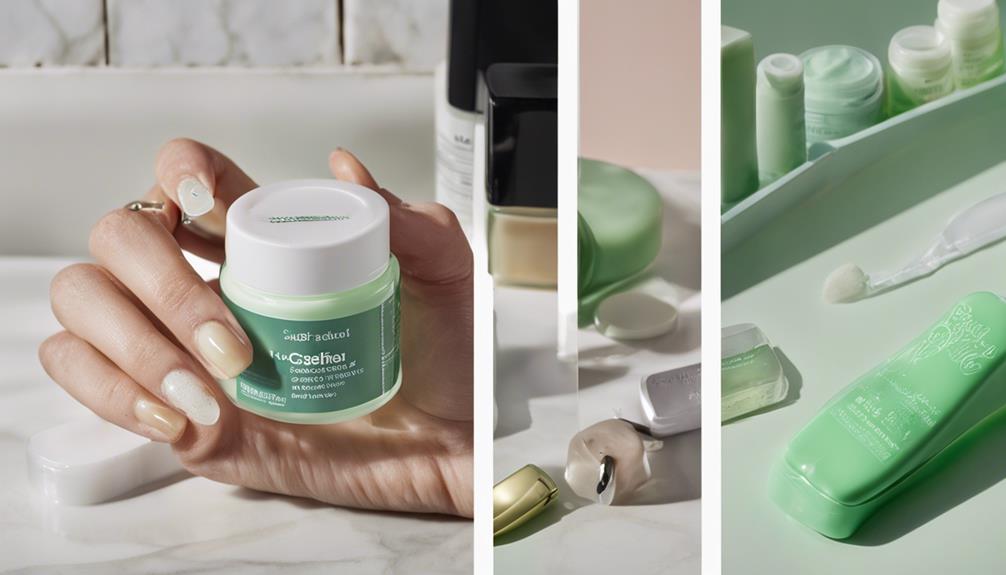
Several over-the-counter treatment options are available to combat green nails, offering a convenient and accessible solution for those seeking to restore their nail health. If you're struggling with green nails caused by bacterial infections, such as those caused by the bacteria called Pseudomonas, over-the-counter antifungal creams can be an effective solution.
Here are some over-the-counter treatment options you can consider:
- Antifungal creams: Apply these creams directly to the affected nail to combat fungal and bacterial infections.
- Nail whitening pens: Use these pens to restore the natural color of your nails, covering up any green discoloration.
- Vitamin E oil: Apply vitamin E oil to the affected nail to promote healing and nail health.
When using over-the-counter products, it's crucial to follow the instructions carefully to guarantee successful treatment of green nails. Remember to always read and follow the product labels, and take necessary precautions to avoid any adverse reactions. By incorporating these over-the-counter treatment options into your nail care routine, you can effectively combat green nails and restore your nail health.
Recovering From Green Nail Syndrome

To recover from Green Nail Syndrome, you'll need to take a multi-faceted approach that involves cutting back infected nails, keeping them dry, and using topical treatments to promote healing. This holistic strategy will help you overcome the infection and restore your nail health.
| Home Remedies | Benefits |
|---|---|
| Cut back infected nails | Prevents further bacterial growth |
| Keep nails dry | Reduces moisture, making it difficult for bacteria to thrive |
| Topical antibiotics (bacitracin or polymyxin B) | Fights Pseudomonas aeruginosa bacteria |
| Diluted bleach or vinegar soaks | Suppresses bacterial growth, promotes healing |
Can the Home Treatment for a Loose Tooth Affect or Help with Treating Green Nails?
If you have green nails, it’s important to address the issue promptly. While attempting to tighten a loose tooth at home may not directly affect green nails, maintaining good oral hygiene can contribute to overall health, which can indirectly impact nail health. Consulting a professional for both issues is recommended.
Can a Crick in Your Neck Cause Green Nails, or Vice Versa?
A crick in the neck can be incredibly frustrating, but can it cause green nails? Conversely, can green nails cause a neck crick? While there is no direct link between the two, it’s important to fix a neck crick and consult a doctor if you notice any unusual nail discoloration.
Frequently Asked Questions
How Do You Get Rid of Green Nails Fast?
You're wondering how to get rid of green nails fast?
First, identify the underlying cause – fungal or bacterial infections, poor nail care, or trauma.
Then, soak your nails in a diluted bleach or vinegar solution to combat the infection.
Trim back infected nails, keeping them clean and dry.
Apply topical antibiotics like bacitracin or polymyxin B to accelerate healing.
Will My Green Nail Go Away on Its Own?
Like a stubborn stain on your favorite shirt, a green nail can linger if left untreated. Unfortunately, it's unlikely that your green nail will go away on its own. Bacterial infections, the common cause of green nails, require attention to resolve.
Ignoring it can lead to further damage or complications. Don't wait and hope it disappears – take proactive steps to address the issue and consider seeking professional guidance for effective treatment.
What Kills Green Fingernail Fungus?
When tackling green fingernail fungus, you'll want to know what kills it. Acetic acid in vinegar is a potent fighter, so soak your nail in a diluted solution.
Bleach can also step in, but be cautious not to irritate your skin. Topical antibiotics like bacitracin or polymyxin B can join the battle too.
What Can I Put on My Green Nail?
Did you know that over 10% of people worldwide suffer from fungal nail infections?
When it comes to treating your green nail, you have several options. You can try applying a diluted bleach or vinegar solution to help combat the infection. Alternatively, topical antibiotics like bacitracin or polymyxin B can also be effective.
Remember to keep your nail clean, dry, and trimmed to aid in the healing process.
Conclusion
You've conquered the battle against green nails! With these effective home remedies and treatments, you've taken the first step towards reclaiming your healthy, vibrant nails.
Remember, a little care and vigilance can go a long way in keeping those pesky fungal and bacterial infections at bay. By following these simple steps, you'll be flaunting your beautiful, healthy nails in no time, and the embarrassment of green nails will be a distant memory.
